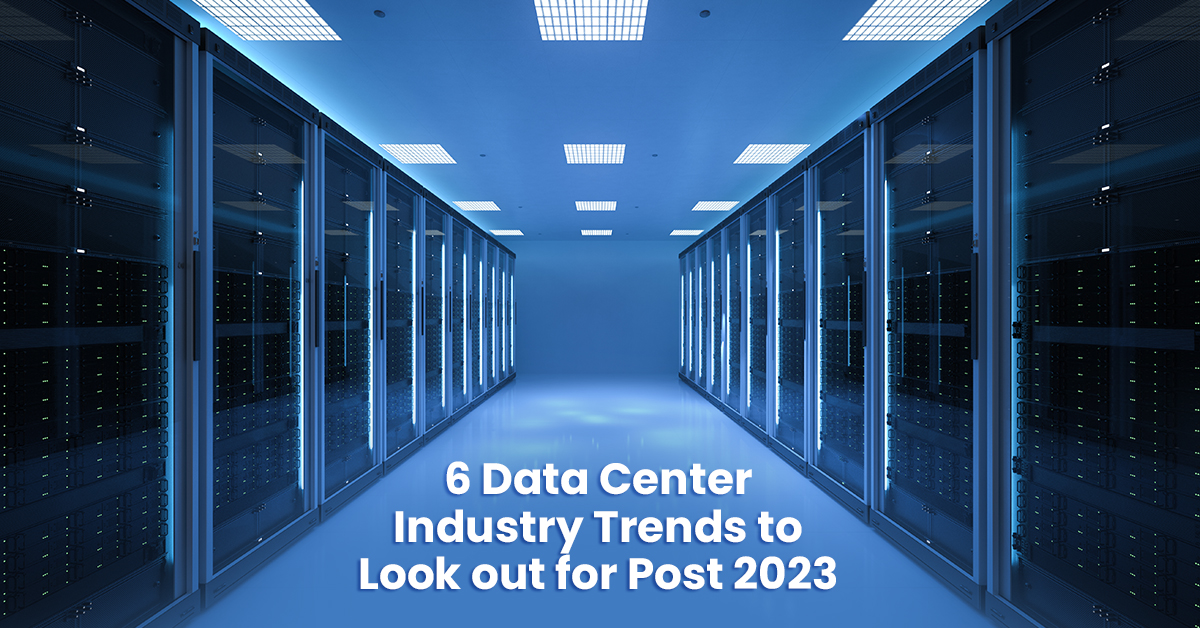
The data center industry has been experiencing significant growth and transformation in recent years. With the increasing reliance on digital technologies and the demand for data storage and processing, data centers have become the backbone of many industries. As we look towards the future, there are several key trends that will shape the data center industry post-2023. In this article, we will explore these trends and their implications.
1. AI Driving Data Center Efficiency
Artificial Intelligence (AI) is playing a crucial role in the growth of data centers. AI technology enables data centers to process and analyze large amounts of data, making it an emerging strategic priority. Companies like Google have already implemented AI in their data centers to improve efficiency. For example, Google used AI-powered systems to reduce the energy required for data center cooling by 40%, resulting in a significant reduction in overall energy consumption. This trend is expected to continue post-2023, as AI becomes more integrated into data center operations.
Hiring employees with the right skill sets is also a challenge in the digital era. Gartner predicts that by 2020, 75% of organizations will experience visible business disruptions due to skills gaps in IT operations. AI can help address this challenge by automating tasks currently performed by humans. Additionally, AI can be used in data center security operations to analyze incidents and identify malicious traffic. The development of AI hardware startups, such as Groq, brings promising advancements to data center infrastructures.
2. Data Centers Go, Green,
Environmental sustainability is becoming a top priority for data centers. To reduce carbon footprints and increase energy efficiency, many data centers are investing in renewable energy sources and green solutions. Green data centers consume less energy, save costs, and contribute to reducing carbon emissions. The green data center market is expected to grow at a compound annual growth rate (CAGR) of around 27% by 2024, driven by the increased need for speed, flexibility, and environmental awareness.
Efforts to reduce power usage effectiveness (PUE) in countries like the UK, Singapore, and India, rising electricity tariffs, and the growing awareness of environmental protection are driving the adoption of green data centers. The BFSI sector, in particular, has witnessed tremendous data growth and is actively seeking sustainable and cost-effective solutions to meet their data requirements.
3. Agility – The Core of Efficient Data Centers
Digital transformation requires data center infrastructures that can scale and adapt to technological advancements. Agile data centers enable businesses to meet the need for speed and streamline work processes. Overprovisioning data centers can lead to wasteful spending in the long run. Practical and agile data centers should ensure future-proofing without unnecessary overprovisioning.
Event-driven workflows across compute, storage, network, and service domains can optimize data center operations. This leads to an intelligent, virtualized data center infrastructure that quickly adjusts to changing business needs. Hybrid cloud architectures, combining public and private cloud models, along with edge assets, are becoming more prevalent. These architectures allow organizations to maintain control of sensitive data while increasing capacity and computing capabilities closer to the consumer.
4. Hybrid Computing Models
Post-2023, organizations will increasingly adopt hybrid cloud architectures that combine public and private cloud models with edge assets. This allows organizations to have more control over their data while meeting the demand for increased capacity and computing capabilities. Enterprise data centers are still essential in this evolving landscape, as their role shifts to reflect a mix that best serves modern organizations.
Cloud computing will remain integral to most organizations, but hybrid architectures will become mainstream. Organizations are tailoring their IT mix and spending to the needs of their applications, resulting in subtle changes in their strategies. The growing importance of edge computing and the rise of IoT devices, 5G, and mobile computing are driving the need for small, distributed data centers.
5. The Need for Edge Computing
Edge computing is becoming increasingly important as the number of IoT devices, 5G, and mobile computing continues to rise. Edge data centers, which are small, distributed data centers, help reduce the load on data center networking bandwidth and enable faster and more efficient data processing. The edge data center market is forecasted to grow at a compound annual growth rate (CAGR) of 36.3% from 2017 to 2022.
As the demand for faster and more reliable connectivity increases, edge computing will play a significant role in supporting IoT, communication, streaming apps, and other emerging technologies. The installation of small cells and nodes around public infrastructures will be essential to support the high frequencies of 5G technology. Major players in the industry, such as Amazon Web Services (AWS) and American Tower, are already establishing their foothold in the edge computing market.
6. The Impact of 5G in India
India, with its large population and growing number of digital consumers, is poised for significant digital growth. With 1.2 billion mobile phone subscriptions and a high demand for data, the reliance on data centers to support digital advancements is increasing. The normalization of 5G technology in India will have a game-changing impact on data centers.
The high frequencies used by 5G technology require small cells and nodes to ensure reliable connectivity. This will lead to the installation of more small cells around public infrastructures. As the IoT market continues to grow, the demand for edge computing and its reliable connectivity features will also increase. India’s future in digital growth is bright, and data centers will play a crucial role in supporting this growth.
In conclusion, the data center industry is set to undergo significant changes post-2023. The integration of AI, the focus on environmental sustainability, the importance of agility and hybrid computing models, the rise of edge computing, and the impact of 5G technology are all key trends to watch out for. Data centers will continue to evolve to meet the growing demands of the digital age, playing a vital role in supporting various industries and driving innovation.


Recent Comments